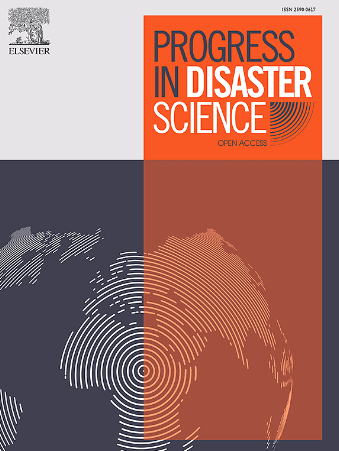Machine learning approaches for seismic vulnerability assessment of urban buildings: A comparative study with analytic hierarchy process
IF 3.8
Q3 ENVIRONMENTAL SCIENCES
引用次数: 0
Abstract
Implementing pre-disaster earthquake strategies is essential for minimizing post-earthquake impacts. In this vein, one key strategy is to assess the seismic vulnerability of existing urban buildings, enabling the adoption of necessary rehabilitation procedures. Here, important parameters influencing the seismic vulnerability of urban buildings are first documented and prioritized then using multi-criteria decision-making tools. This results in a vulnerability index (VI) representing the potential earthquake damage. Using semi-supervised machine learning (ML) methods, the corresponding VI is determined, and the results are compared with different methods. Various ML-based methods are analyzed for the available dataset to identify the most effective approach for this study. This methodology is then applied to an urban region to assess the VI not only for the current year (i.e., 2024) but also to predict it for 2044 and 2064. The VI of buildings indicates that approximately 60 % and 90 % of the structures in the studied region will experience significant damage to earthquakes in the years 2044 and 2064, respectively. In the final step, various ML methods are evaluated for data classification. Decision tree and random forest methods achieve an accuracy of over 95 %, while linear regression is utilized for predicting the index value, resulting in an R-squared error rate of approximately 91 %.
城市建筑地震易损性评价的机器学习方法:与层次分析法的比较研究
实施灾前地震战略对于尽量减少震后影响至关重要。在这方面,一项关键战略是评估现有城市建筑物的地震脆弱性,使其能够采取必要的修复程序。本文首先对影响城市建筑地震易损性的重要参数进行了记录和排序,然后使用多准则决策工具进行了排序。这就产生了一个脆弱性指数(VI),它代表了潜在的地震破坏。使用半监督机器学习(ML)方法,确定相应的VI,并将结果与不同方法进行比较。针对现有数据集分析了各种基于ml的方法,以确定本研究最有效的方法。然后将该方法应用于一个城市地区,不仅评估当年(即2024年)的VI,还预测2044年和2064年的VI。建筑物的VI指数表明,研究区域内大约60%和90%的建筑物将分别在2044年和2064年遭受重大地震破坏。在最后一步中,评估各种ML方法用于数据分类。决策树和随机森林方法的准确率达到95%以上,而使用线性回归预测指标值,导致r方错误率约为91%。
本文章由计算机程序翻译,如有差异,请以英文原文为准。
求助全文
约1分钟内获得全文
求助全文
来源期刊

Progress in Disaster Science
Social Sciences-Safety Research
CiteScore
14.60
自引率
3.20%
发文量
51
审稿时长
12 weeks
期刊介绍:
Progress in Disaster Science is a Gold Open Access journal focusing on integrating research and policy in disaster research, and publishes original research papers and invited viewpoint articles on disaster risk reduction; response; emergency management and recovery.
A key part of the Journal's Publication output will see key experts invited to assess and comment on the current trends in disaster research, as well as highlight key papers.
 求助内容:
求助内容: 应助结果提醒方式:
应助结果提醒方式:


